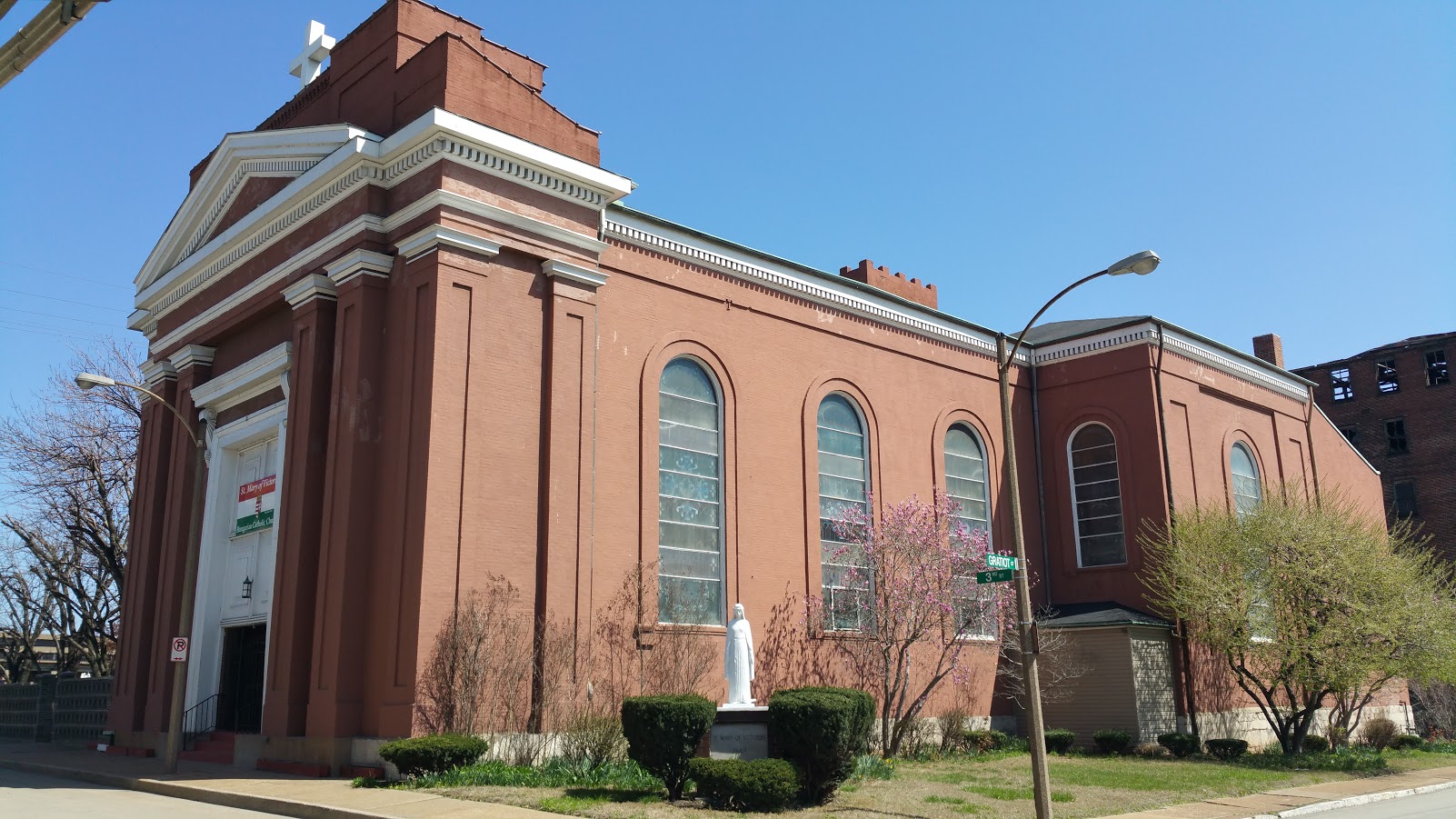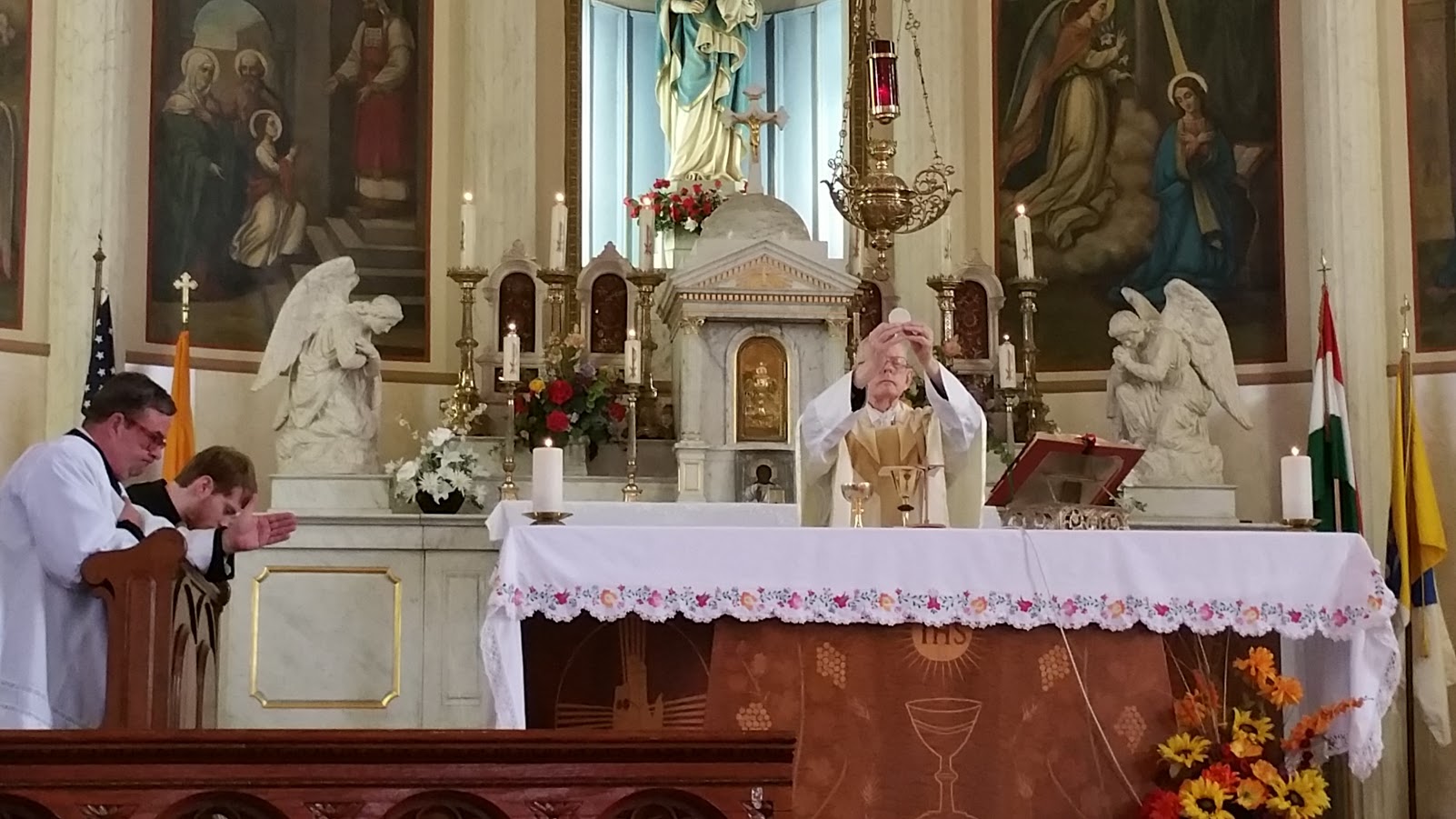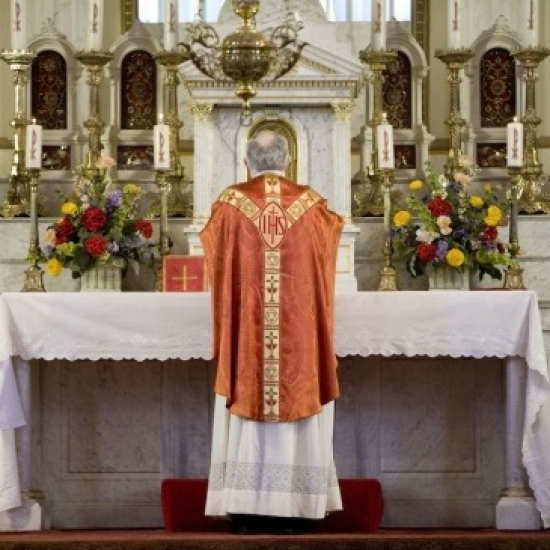16 July Our Lady of Mount Carmel (EF Missa Cantata, 9am)
Introit: Gaudeamus,
Gradual: Benedicta,
Alleluia: Per te Dei Genetrix,
Offertory: Recordare Virgo Maria
Communion: Regina mundi
Recessional: Salve Regina
Mass X, Ambrosian Gloria.
The Introit antiphon has two phrases. We break the first one into two parts:
1. (a) Gaudeamus omnes in Domino,
(b) diem festum celebrantes sub honore beatae Mariae Virginis:
2. de cuius solemnitate gaudent Angeli et collaudent filium Dei
As we've noted before, this melody was originally composed for a Greek text on the feast of St. Agatha. It soon became a popular chant and was adapted for a number of feasts. Text and melody have two phrases. The first phrase summons the entire Church militant to rejoice in the Lord, for 'it is a festival day in honor of N.' (In this instance, the blessed Virgin Mary.) The second phrase depicts the reason for the triumphant joy of the Church. (In this instance, a solemn feast of our Lady, the Virgin Mary.)
Each phrase has two members, each of which in turn has two sub-members. Both major members of the first phrase close on a high pitch: Domino, Virginis. The second phrase repeats over solemnitate and collaudent the ascending musical line of the first part. The melody here develops according to the declamatory accents that intelligent rendition would demand. The development and division of the piece might be pictured graphically as follows:
Gaudeamus omnes in Domino,
Diem f. c. s. honore Mariae Virginis:
d. c. solemnitate gaudent Angeli,
et collaudant Filium Dei.
The two motifs run through the entire Introit. The first occurs over sub honore, solemnitate, and with a variation, over collaudant and in Domino. It begins with the interval f-g and ascends by means of a lively torculus (once by means of a pes subbipunctis) to c, thus recalling Gaudeamus. The second motif with its quiet seconds occurs over Dei, again a full tone higher over (An)-geli, and finally a fourth higher over (Do)-mino.
The high points of the melody are not reserved only to the accented syllables. The significant in Domino—'in the Lord'—for instance, is very prominent, and rightly so, since every feast of the Blessed Virgin is a feast of our Divine Lord also. The same thought recurs in the second phrase of the Introit—the angels glorify God because He has honored, crowned, and transfigured His Blessed Mother.
The first phrase begins as solemn and festal, the stress of voice increasing gradually up to the word Domino over which a and b are given special emphasis. Soft accents mark the words di-(em) fe-(stum) ce-(le)-bran-(tes), the thrice recurring double f especially being sung very lightly. This entire member should be rendered fluently. The member following is characterized by a progressive ascent and a gradual swell of the melody up to Virginis, which has a refreshing b. The double c over (Mari)-ae, the only mention of the name of Mary in the entire piece, should be rendered with warmth rather than with volume.
In the second phrase, a minor accent is placed over the second syllable of (sol)-lem-(nitate). The porrectus over Ange-(li) carry the melody and should be somewhat emphasized. The dynamic high point of the phrase centers over collaudant. A further secondary accent stresses the third note over Fi-(lium).
The Gradual has two phrases in the corpus and two in the verse:
1. Benedicta et venerabilis es, Virgo Maria,
2. quae sine tactu pudoris, inventa es Mater Salvatoris.
3. V. Virgo Dei Genitrix, quem totus non capit orbis
4. in tua se clausit viscera factus hom
The melody, like that of St Joseph on 19 March, is very expressive and well adapted to this text. The corpus is dominated by the stirring melody over Maria, while the verse has its fervent Virgo—a wondrous hymn of praise to the Virgin Mother of God. We begin the first phrase in a suppressed tone but lively tempo, and then continue Virgo Maria with bright and sunny warmth. If possible, sine tactu pudoris should be sung without pause for breath; the delicacy of its text calls for fine tonal shading. The same melody—more rounded out, however—recurs over Mater Salvatoris. After the tender and extended melody over virgo, care must be taken that the important words Dei Genitrix be not stunted. The development of the melody over quern totus non capit orbis differs somewhat from the original. Keeping the above remarks in mind, we might now compare -rabilis es and Salvato-, sine tactu and -venta es, pudoris and mater, Genitrix, quern totus and tua se clausit viscera. The melody over orbis suggests word-painting; that over homo, the abasement of the Son of God in His Incarnation.
The Alleluia verse has two phrases; the second has two parts:
1. Per te Dei Genitrix nobis est vita perdita data
2. (a) Quae de coelo suscepisti prolem
(b) et mundo genuisti Salvatorem
Again we have the major thrust of the formulary of this feast: through the cooperation of the Blessed Virgin Mary in the work of our Redemption, bringing forth our Saviour in her body, the life we lost through sin has been restored to us. The high points over quae, suscepisti, and et mundo emphasize her all important role. But the pinnacle of the melody is reserved for her prolem, Christ the Lord.
The Offertory has three phrases:
1. Recordare, Virgo Mater, in conspectu Dei,
2. ut loquaris pro nobis bona,
3. et ut avertat indignationem suam a nobis.
In the Offertory we address to the Mother of God the words which the sorely tried prophet Jeremias speaks to the Lord in behalf of his ungrateful people. She stood beneath the cross of Jesus and looked into His glazing eyes. She heard Him pray: "Father, forgive them!" And she prayed with Him. She intercedes for us; and with the solicitous heart of a mother, she implores God to avert His righteous anger from us.
As once she prayed beneath the cross, so now she prays in heaven for us, in conspectu Dei, before the face of Him who suffers no more, but has entered into His glory. Even today during the sacred Mysteries she will intercede for us, and when the bell at the consecration announces that He has once more become present among us, then Mary implores abundant graces on our behalf. So long as there is a human heart that is sighing and struggling and suffering, Mary does not weary of interceding for it, until the time when she will bring us all into the blissful presence of her divine Son.
In a few of the ancient manuscripts the present text and melody are found as the second verse of the Offertory for the twenty-second Sunday after Pentecost. In Codex H. 159 of Montpellier this composition was inserted later. This melody exhibits the technique of thematic execution as few others do. Over the word Recordare the small note e forms the connecting link between two motifs, the first of which we shall call A, the second B. Over bistropha and pressus, which should be kept well separated in the rendition, motif A has an upward movement to the dominant, after which the melody descends a third. Motif B exhibits a downward movement and then ascends. Over Virgo Mater the same two motivs are repeated. Bona follows motif B; the three preceding notes re-echo a part of motif A, as do also the notes over et ut aver-(tat). Indignationem suam with the descending minor third c-a repeats motif A in an amplified manner. If we include the preceding third we have in that which follows a middle cadence of the fifth mode. Of the greatest artistic value is the employment of the two motives in the florid vocalization over a. Before f is attained, the melody descends in a fifth to the tonic d. Motif B sets in on high c and ends with an ascent of a third. In a brilliant rise, motif A is now attached a fifth higher and then leads over to motif B, which sets in on c. This trope realizes to the full the beauty inherent in the melody.
The melody is characteristic of fervent petition. With ut loquaris it becomes still more appealing. Indignationem suam sounds the outcry of a heart tortured by the weight of divine wrath. But the confident melody of Recordare returns, swells to victorious height and power, and dies away with the expression of quiet resignation.
The Communion antiphon has three phrases:
1. Regina mundi dignissima Maria Virgo perpetua
2. Intercede pro nostra pace et salute
3. Quae genuisti Chrisum Dominum Salvatorem omnium
This brief melody, modeled on an Office antiphon, reaches its high point on a fervent plea to the Queen of heaven who gave birth to Christ the Lord the Saviour of all, to intercede for our peace and salvation. This is the promise of our Lady to those who wear her scapular and honour her under the title of this feast.


















